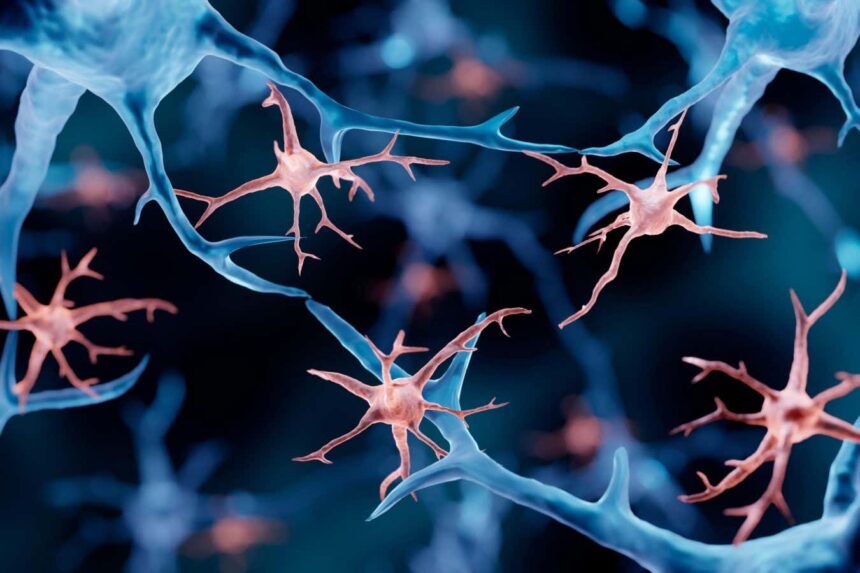
Microglia are specialised immune cells in the brain
Science Photo Library/Alamy
Replacing the brain’s immune cells pauses the progression of a rare and deadly brain disorder called ALSP – and it lays the groundwork for future trials to treat other neurological conditions.
Numerous studies indicate that dysfunctional microglia – specialised immune cells in the brain – contribute to a range of neurological conditions, such as Alzheimer’s disease and schizophrenia. With ALSP, short for adult-onset leukoencephalopathy with axonal spheroids and pigmented glia, people have mutations in a gene that encodes for a protein essential for these cells’ survival, which results in fewer microglia and progressive cognitive decline. There is currently no cure for the fatal condition.
So Bo Peng at Fudan University in China and his colleagues turned to an experimental treatment known as microglia replacement therapy. Previous research in rodents has shown that transplanted stem cells – which have the ability to develop into other cell types – can replace microglia. But the brain’s existing microglia must be depleted in order for this to happen, so there is an opening for the new cells to migrate into the brain and transform into a microglia-like form. This can be done using drugs that inhibit a protein microglia depend on to survive.
Peng and his colleagues first tested this strategy in five mice with genetic mutations similar to those in ALSP. Because these mutations already affect the protein microglia rely on, the researchers didn’t have to deplete the protein with drugs. The team then transplanted stem cells from healthy mice into the sick ones. After 14 months, the treated mice had about 85 per cent more microglia in their brains, on average, than six untreated rodents with the same mutations. Their motor function and memory also improved.
Encouraged by these results, the researchers next treated eight people with ALSP using stem cells from donors without the condition. Brain scans collected one and two years later were almost no different from those taken before the procedure. In contrast, four people with ALSP who didn’t undergo treatment saw significant brain deterioration and lesioning over the same period. This suggests the microglia replacement therapy had halted the condition’s progression.
At the start of the study, all of the participants took an exam that measures cognition on a 30-point scale, with lower scores indicating worse cognition. When they took the same test a year later, scores remained stable, on average, for those who underwent microglia replacement – and fell almost 10 points for those who hadn’t.
These results suggest microglia replacement therapy is an effective treatment for ALSP. Yet because this is the first human trial, “we still don’t know the potential side effects”, says Peng. “But since this is a rapidly progressive fatal disease, the benefits may be much more important to consider than the potential side effects.”
Chris Bennett at the University of Pennsylvania points out that stem cell transplants have been used to treat neurological conditions for decades. “It is thought to be effective specifically due to microglia replacement,” he says. In fact, the US Food and Drug Administration recently approved two similar therapies for two other rare brain conditions. “Those prior studies didn’t use this specific term, but did the same thing, for a different disease,” says Bennett. “So I would describe this as a clever and wise use of [stem cell transplants], but that microglia replacement therapy by [stem cell transplant] has been done for decades.”
Still, these results highlight the broader potential of microglia replacement therapy. Peng believes the approach could one day treat more common brain conditions. For instance, several genetic mutations that greatly increase the risk of Alzheimer’s disease affect microglia. Replacing these cells with ones from people without such mutations could be a promising treatment for the condition.
Topics:
- neuroscience /
- immune system







